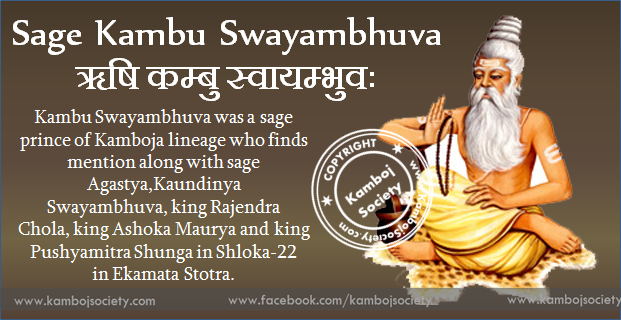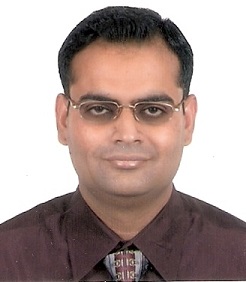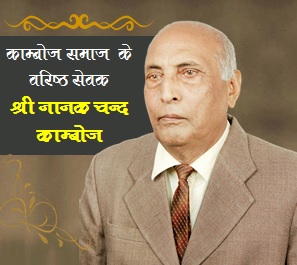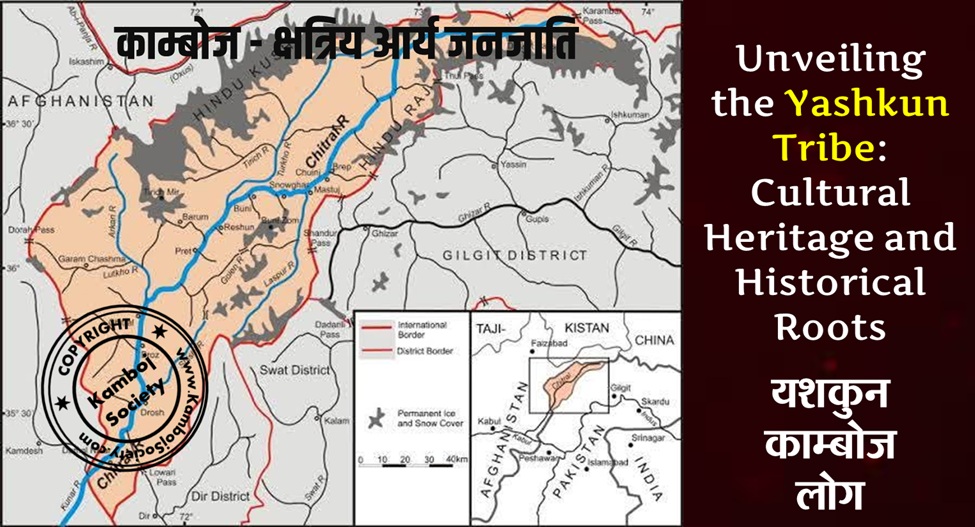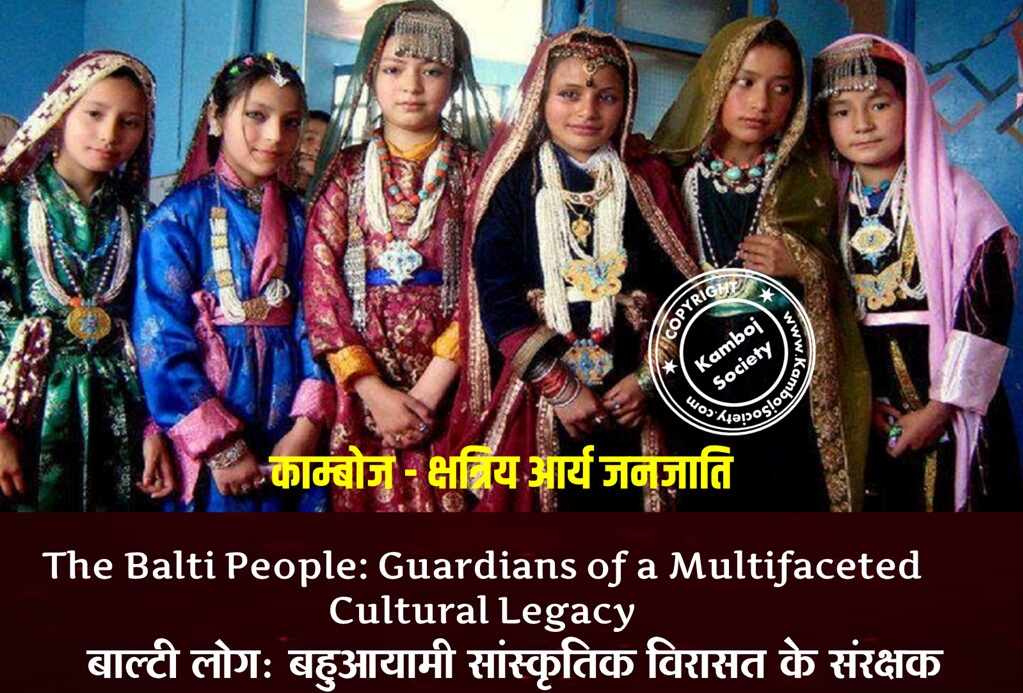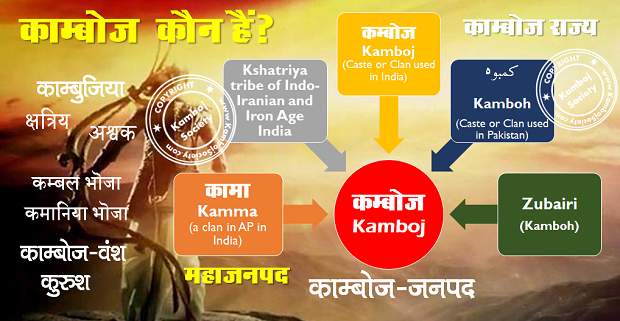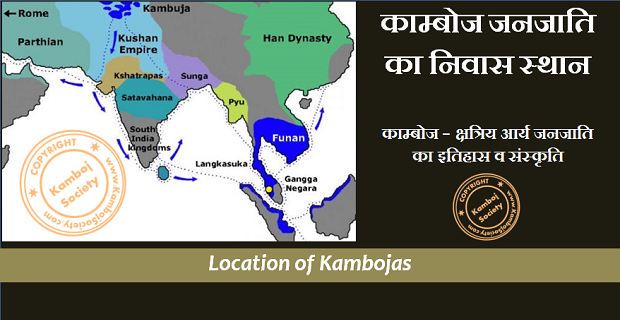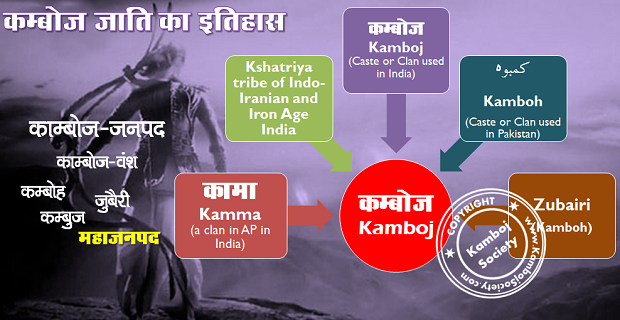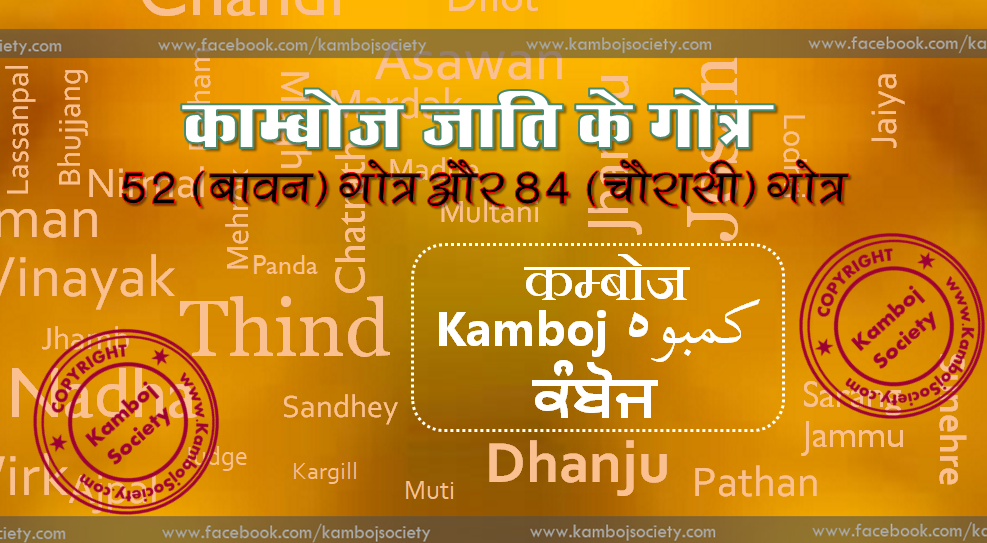Kambu Swayambhuva was a sage prince of Kamboja lineage who finds mention along with sage Agastya, Kaundinya Swayambhuva, king Rajendra Chola, king Ashoka Maurya and king Pushyamitra Shunga in Shloka-22 in Ekamata Stotra. The legend holds that Kambu Swayambhuva was a learned prince who had initially been an Indian king. He had ventured into the Far East and entered an area having jungles that was being ruled by a king of Naga people|Naga lineage. Defeating the Naga king, prince Kambu married his daughter Mera and developed the land into a fertile and flourishing country. The combination of Kambu and Mera names is said to have given rise to the name Khmer (Kambu + Mera =Khmer) according to Goerge Coedes [1]. Sage-prince Kambu of the Cambodian legends, to all probability, belonged to the Kamboja lineage [2] and appears to have sailed from India|Indian subcontinent, probably from Saurashtra/Gujarat on the west coast of India and established a small Kamboja kingdom in Bassac around Vat-Ph'u hill in Mekong Basin. In ancient Chinese accounts, this kingdom is known as Chenla. The time frame for this event could be the later half of 4th c AD. Sage prince Kambu was succeeded by his little son Shrutavarma Kambuja who ruled in 5th century AD. Shrutavarma was succeeded by his son Shreshthavarma Kambuja who was followed by king Viravarma Kambuja. Princess Kambujarajalakshmi (fortune of the kings of the Kambujas), the queen of prince Bhavavarman I, was from the line of Kambu Swayambhuva and it was through her that Bhavavarman I inherited the royal lineage and became king of Kambuja. The Kamboja power established by sage prince Kambu in Indo-China, however, did see many ups and downs in the succeeding centuries before culminating into Angkor|Angkorean fame. Around 8th century A.D, the kings of Shailendra dynasty seized control of Chenla (i.e. Kambuja) but at the start of 9th century, the Kambuja family reasserted itself under a capable Kamboja prince Jayavarman II, shook off the foreign yoke, unified the Land Chenla and Water Chenla and renamed the unified country as Kambuja after his family's lineage. Thus began the long line of Kambuja princes and also the famed Angkor|Angkorean period in Cambodia|Cambodian history which was to reach to very splendorous and glorious heights in the succeeding centuries. Prince Swayambhuva Kambu is claimed to be the eponymous ancestor of the Kambujas i.e the royal family of Cambodia|Kambodia with celestial nymph Mera given to him by god Siva [3]. Princes of Kambodia expressly state themselves as Kambujas and to have descended from the lineage of Kambu. As is otherwise also obvious, the name Kambu is stated to be a corruption of the standard Sanskrit term Kamboja [4] [5] [6]
References
- D'apr s l' pigraphie cambodgienne du X si cle, les rois des "Kambuja" pr tendaient descendre d'un anc tre mythique ponyme, le sage ermite Kambu, et de la nymphe c leste Mera, dont le nom a pu tre forg d'apr s l'appellation ethnique "khm r" (George Coedes); Indianised States of Southeast Asia, 1968, p 66, George Coedes.
- In ancient history of India, a member of a tribe or its prince was also known after the name of his tribe (jana) or his country (janapada). In case of Kamboja tribe, Panini specifically states so (Ashtadhyayi IV.1.175). Thus from tribal name Kambuja (Kamboja) came the name "Kambu" which is corrupted form of Kamboj.
- Indianised States of Southeast Asia, 1968, p 66, 47, George Coedes
- Ancient Kamboja, People and the Country, 1981, pp 359-60, Dr J. L. Kamboj.
- The noted scholars like C. Lassen, Dr S. Levi, Dr M. Witzel, Dr J. Charpentier, Dr A. Hoffman, Dr A. B. Keith, Dr A. A. Macdonnel, Dr H. W. Bailey and many others have traced the ethnic name Kamboja in the royal name Kambujiya/Cambujiya of the Old Persian language|Old Persian Inscriptions (Cambyses/Kambuses of the Greeks) (See e.g: Early East Iran and Atharvaveda, Persica, 1980, pp 114-15, ffn 81, Dr Michael Witzel).
- Parskar Gryhamsutram spells the usual Kamboja as Kambuja (Parskar Gryhamsutram 2.1.23). Markandeya Purana (8.1-6) as well as in Srimad Devi Bhagawatam (5.28.1-12) etc refers to the Kambojas as Kambu clan. King Ashoka's Rock Edicts V & XIII located at Peshawar write Kamboj as Kamboy or Kambo. According to J. W. McCrindle, Kamboja (=Afghanistan) is Kaofu (Kambu) of Hiuen Tsang (Alexander's Invasion, p 38; See also Some Kshatriya Tribes of Ancient India, p 235, Dr B. C. Law). The Tuthagataguhya-Sutra of Ratnakuta Collections of the Buddhist religion uses the word Kieufieu (i.e. Kaofu of Hiuen Tsang) for the Kamboja. The reference Kieufieu of Tuthagataguhya-Sutra stands translated variously as Kampoce, Kampochih and Kampotse etc in the Tibetan religious texts. Numerous muslim writings of mediaeval era spell the Kamboj clan name as Kambu as well as Kambo. Obviously, these Kambu/Kambo terms are the corrupted forms of Kambuj/Kamboj and relate to the Kamboja of ancient Sanskrit and Pali texts and Inscriptions. This Sanskrit Kamboja appears as K.b.u.ji.i.y, Kabujiya or perhaps Kabaujiya/Kaboujiya and Kambujiya or perhaps Kambaujiya ( OR with -n- in place of -m- as Kanbujiya or Kanbaujiya) of Old Persian language|Old Persian inscriptions, and Cambyses of Greek language|Greek writings. The same name appears as C-n-b-n-z-y in Aramaic, Kambuzia in Assyrian, Kambythet in Egyptian language|Egyptian, Kam-bu-zi-ya or Ka-am-bu-zi-ya in Akkadian language|Akkadian, Kan-bu-zi-ia or Kan-bu-si-ya in Elamite, and Kanpuziya in Susa|Susian language (cf: Ancient Kamboja in Iran and Islam, p 69, Dr H. W. Bailey). It appears to have been quite a popular name among the ancient Iranians, of whom the ancient Kambojas are said to have formed a clan.


